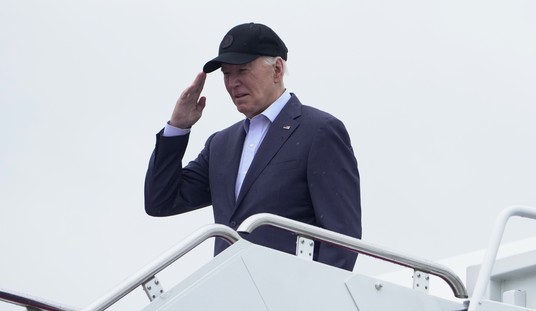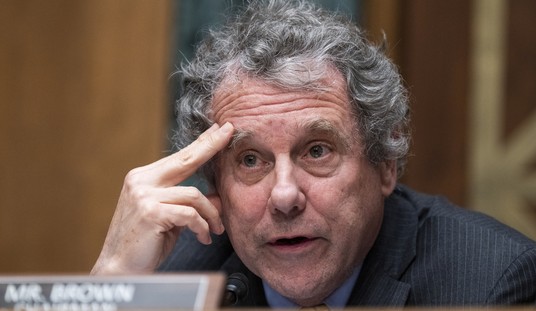Uwe T. Schmidt, chief executive of Solar Trust, says he is a fan of the Energy Department’s loan-guarantee program. He met with Energy Secretary Steven Chu and the program’s director, Jonathan Silver, when his company was seeking support for a 1,000-megawatt solar thermal plant it wanted to build in the California desert in Riverside County.
But when the department offered him a $2.1 billion loan guarantee, Schmidt turned it down. It would have been one of the largest stimulus-funded clean-technology projects, and Solar Trust had been negotiating the deal for roughly a year. But Schmidt decided it was too risky.
“I’m now famous for getting the largest loan guarantee and then turning it down,” Schmidt said. “For very sound business reasons, we opted not to go forward.”
The Obama administration’s vaunted initiative to catalyze the U.S. clean-energy industry — under attack for betting half a billion dollars on the solar-panel manufacturer Solyndra, which closed last month — has become a case study of what can go wrong when a rigid government bureaucracy tries to play venture capitalist and jump-start a nascent, fast-changing market.
Schmidt concluded in early 2011 that the influx of inexpensive flat solar panels was undercutting his company’s year-old proposal to use a field of mirrors that concentrated sunlight on a thermal tower. Despite market changes, however, the terms of the federal loan guarantee wouldn’t let Solar Trust switch in midstream to flat panels. So Solar Trust sought private financing.
“We look at a lot of technologies, and I don’t care which one we build — I want to build the one that makes the most financial sense,” Schmidt said.
The inflexibility of the terms for Schmidt’s project was just one of the troubles that have plagued the Energy Department’s $38.5 billion loan-guarantee program from its beginning in 2009. Inundated with proposals, the small Energy Department loan office was initially overwhelmed, and companies complained that it was moving too slowly, not too quickly as has been alleged recently in the case of the now-bankrupt Solyndra.
While Chu was striving to get things moving, top White House economic officials, including Lawrence H. Summers, then director of the National Economic Council, doubted the government’s ability to shape a new industry, and some wanted to tighten up oversight by the Office of Management and Budget — even if that meant some guarantees would never be given out.
Recommended
Meanwhile, tumbling prices for silicon and turmoil in the financial world were changing project assumptions faster than the bureaucracy could make decisions.
“The Department of Energy supports a process that would limit OMB and Treasury review,” said an Oct. 25, 2010, memo to the president. “OMB and Treasury support the establishment of clear policy principles for project review, recognizing that this may pose a risk that some program funds may not be obligated by the program’s Sept. 30, 2011 sunset date.”
Now, with only a week to go, the Energy Department is scrambling to get billions of dollars out the door. But time is running out. Last week, it told two pending solar projects that there wasn’t enough time to complete the deals.
Skeptics at the White House
Chu, a Nobel Prize-winning physicist convinced that climate change posed a threat, came to Washington in a hurry to change the nation’s mix of energy sources. “Be nice, but don’t be patient,” he told top appointees before they were sworn in.
With the economy in crisis, Chu was given a rare opportunity. Under the George W. Bush administration, a loan-guarantee program designed to help finance the construction of nuclear power plants had been expanded by lawmakers who favored solar, geothermal and wind energy.
But they hadn’t funded the program. Federal budget rules require an appropriation to cover the risk that projects will fail and cost taxpayers money. How much would be needed was hard to determine, because there isn’t much of a track record for renewable technology or, in the past three decades, nuclear plants. In early 2009, as part of economic stimulus legislation, Congress provided the funds to cover expected losses.
Suddenly the Energy Department had a $33.6 billion grant program and a $38.5 billion loan-guarantee program, each bigger than the department’s normal annual budget, which was mostly devoted to the stewardship of the nation’s nuclear weapons stockpile.
The department initially had only nine people to review applications for loan guarantees. And there were lots of applications. The loan guarantees — and later direct loans from the Treasury’s Federal Financing Bank — drastically lowered the cost of financing a project. And finance costs, said Ted Meyer of First Solar, often equal the expense of purchasing all the modules in a solar project.
“It was a manna from heaven. Too good to be true,” said Michael Butler, chief executive of Cascadia Capital, an investment bank that has arranged financing for more than 20 clean-technology ventures. “Every proposal we saw planned on getting a government loan.”
Chu hired a McKinsey consultant and expanded the loan staff, including contractors, to 200 people, by using about $1 billion from the stimulus grant program just to administer the stimulus loan-guarantee program. Chu urged project developers to keep proposals to 50 pages to speed the process.
Some White House advisers liked the program. The president touted it as a job creator, even though capital-intensive energy projects, however worthy, are not the best vehicles for creating permanent jobs. In the short term, at least, there would be construction jobs. The program highlighted President Obama’s desire to promote technology and boost industry’s competitiveness.
Obama received encouragement from Silicon Valley venture capitalists who had struck it rich in information technology and were now investing in energy technology.
Not everyone in the administration agreed. Summers doubted that the government could do this kind of lending well, according to industry and administration officials. He believed the government would end up funding projects that would have been built anyway or funding projects that flopped. He resisted efforts to move money fast.
So the Energy Department negotiated with project developers for months; then the OMB would review the credit risk, often demanding new terms and slowing the process. The OMB contended that its reviews averaged just 28 calendar days. But one leading venture-capital executive, speaking on the condition of anonymity to protect relationships with the government, said: “OMB would put them through the wringer about the project. It would ask for detailed changes, or ask endless questions, or just sit on it.”
The Oct. 25, 2010, memo from Summers, energy czar Carol Browner and Ron Klain, then Vice President Biden’s chief of staff, urged the president to move the loan guarantee money into a Treasury program that gives projects cash in lieu of tax credits. The Treasury grants would move money faster and not put the administration in the position of choosing technologies.
But, the memo noted, Senate Energy and Natural Resources Committee Chairman Jeff Bingaman (D-N.M.) “views [the loan guarantees] as ‘his program’ [and] would strongly oppose” such efforts. Biden’s office proposed a compromise, but the memo said: “DOE, OMB and Treasury have tried to reach common ground on which to execute the program to date, and success has been limited.” The process continued without much change.
For some firms, real benefits
For some companies, the program has worked well.
First Solar ran out of time for one of its loan-guarantee applications, which it filed 13 months ago. But it has closed on another for $967 million. Meyer said the guarantees helped finance its Agua Caliente project more competitively. The project, a 2,400-acre field of photovoltaic panels in Arizona, will supply electricity to California. It employs 600 construction workers.
First Solar, which manufactures panels in Ohio, Germany and Malaysia, is also building a factory in Arizona.
But for many firms, the process has been a quagmire. After prolonged negotiations with Solar City, which would have installed solar panels on the rooftops of military housing, the Energy Department said there wasn’t enough time to finish the deal before the Sept. 30 deadline. Unlike the Solyndra deal, Solar City’s plan did not hinge on any one technology and wouldn’t have tapped federal guarantees until power started flowing.
Some project financiers found talks with White House officials “infuriating” and said the experience was like “speaking two different languages.”
Some firms decided not to bother. MiaSolé, which makes photovoltaic panels, applied for a loan guarantee to expand manufacturing but then withdrew the application. “We concluded that it didn’t fit into our business model,” said Rob DeLine, Mia Solé’s vice president of marketing. The guarantee complicated talks with equity investors and banks, and the company felt it needed to lower costs first.
Schmidt said the DOE program could benefit from “more flexibility.”
“You can’t make a material change once you’ve entered into a conditional commitment,” Schmidt explained. “That means you can’t make the project worse. But by definition, once you get to the last stage, you can’t make a change that improves the project, either.”
One major battle took place over Caithness Energy’s Shepherds Flat wind farm in Oregon. The OMB and Treasury believed the project was “double-dipping” by tapping the cash grants from a Treasury program while seeking a loan guarantee from the Energy Department. They also believed that the project would go ahead without additional government support.
The developers hired a lobbyist, former congressman Toby Moffett, and in early October enlisted help from their senators. One person familiar with the talks said at the time that it was “a little like the Wizard of Oz; you don’t know where the problem is coming from.” General Electric, which provided both financing and wind turbines, threatened to walk away.
The project’s $1.06 billion loan guarantee was approved Oct. 12.
When Summers, Browner and Klain wrote their memo later that month, they made Shepherds Flat a case study of what was wrong with the loan guarantees. It said that federal and state subsidies totaled $1.2 billion, more than 65 percent of the project’s cost. The sponsor had “little skin in the game” — about 10 percent — the memo said.
A history of failed projects
Solyndra, a solar-panel maker that went bankrupt in August with $535 million in federally backed loans, was riskier than many other proposals, industry executives say. Its cylindrical tubes captured a high percentage of the sun’s energy and its panels were easy to install, but they were expensive to make.
Silicon prices hurt, too. When Solyndra first sought financing during the Bush administration, which picked its proposal as one of 16 finalists, the price of silicon was soaring. Solyndra’s tubes didn’t use silicon, an advantage then. Since 2008, however, silicon prices have collapsed and Solyndra’s costs haven’t come down as much.
“The Solyndra project . . . assumed that the cost of materials, silicon, would remain high and that the cost of panels would not go down as fast as they did,” said a senior executive at a renewable-energy financing fund. “In the end, those assumptions were wrong.”
Many industry experts said the Energy Department should have anticipated that because projects were underway to bring more silicon onto world markets. Solyndra defenders say that the top five Chinese solar panel makers each received $4 billion to $9 billion in low-cost loans from the China Development Bank.
Solyndra isn’t the first example of the federal government wasting money on an energy project. President Richard M. Nixon favored breeder nuclear reactors, and more than $10 billion went into the Clinch River project before it was canceled. President Jimmy Carter funneled money into a government synthetic fuels corporation that was abolished in 1985.
Economists note that the government might never have gotten involved in loan guarantees if Congress had been willing to tax fossil fuels, introduce feed-in tariffs (a subsidized price) for renewable energy or approve a cap-and-trade policy that would penalize fossil fuels.
Feed-in tariffs have made Spain, Italy and Germany the world’s largest markets for solar power. And they don’t anoint winners and losers.
In the absence of those incentives, many investors still believe in the loan-guarantee program.
“If you don’t take risks, you will not get rewards,” said John Doerr, a fabled venture capitalist at the firm of Kleiner Perkins Caufield & Byers. “It’s an absolutely necessary part of the equation.”
“We’re going to see more solar venture failures,” Doerr said. “We started with 35 PC computer makers and ended up with three.”

























Join the conversation as a VIP Member